How many types of bees are there? Amazingly, more than 20,000 known types of bees inhabit our planet!
Bees are some of the world’s best pollinators! Without them, we would not have the food we need to survive.
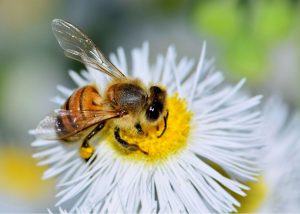
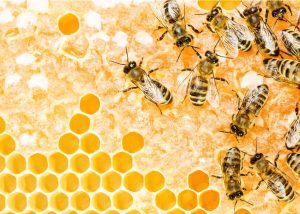
Keep reading to learn about pollination and different types of bees around the world! Then download our free, beautifully illustrated bee poster and bee dot-art craft for kids, only from The Good and the Beautiful!
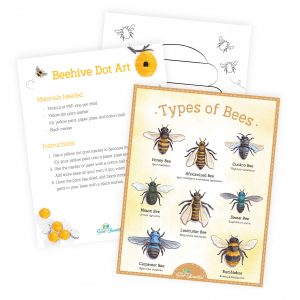
What Is Pollination?
Bees’ pollination habits make them unique. Bees are often confused with their more aggressive relatives, wasps and hornets. However, wasps and hornets are not bees. One major distinction between them is that bees are mainly herbivores that focus on collecting pollen to feed their young. Wasps and hornets are carnivores and feed on other insects.
Pollen is a powdery substance, usually yellow, that a plant produces in its flowers. Pollination is the exchange of pollen from one plant to another. Bees, wind, and other animals carry pollen from plant to plant.
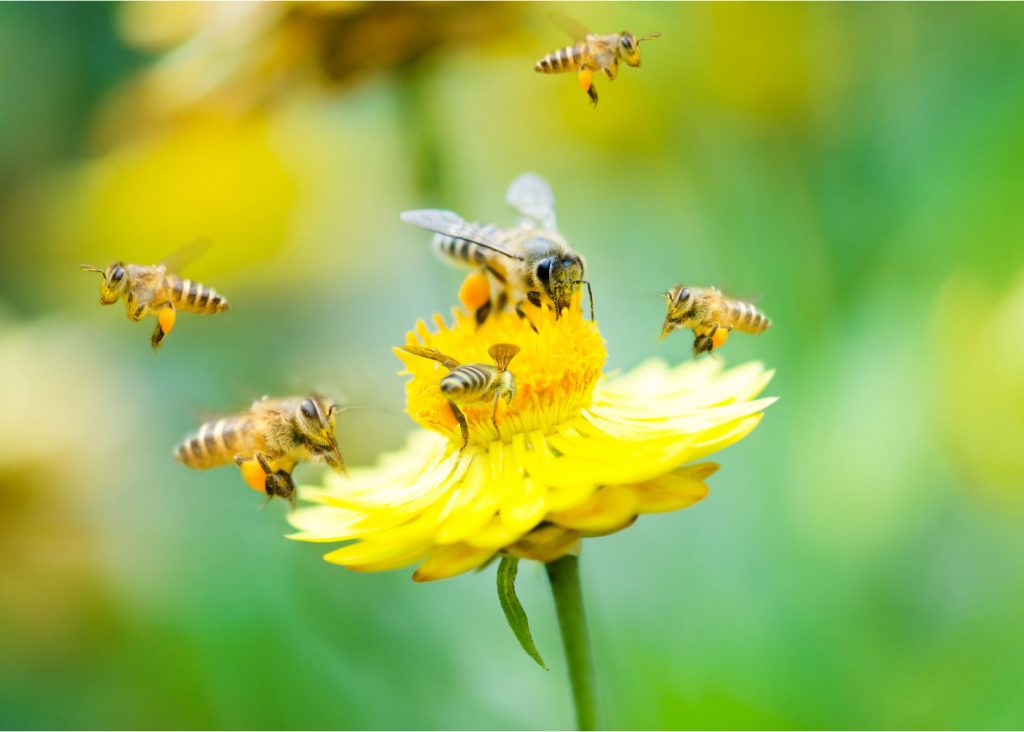
As bees search for nectar, they pollinate by landing on plants or flowers and covering themselves in pollen, which easily sticks to the bees’ hair. They then fly to other plants and spread this pollen from plant to plant, which allows the plants to reproduce and create the fruits and vegetables we all love to eat.
Types of Bees
Let’s take a closer look at these amazing pollinators and get to know some of the different types of bees.
Honeybees
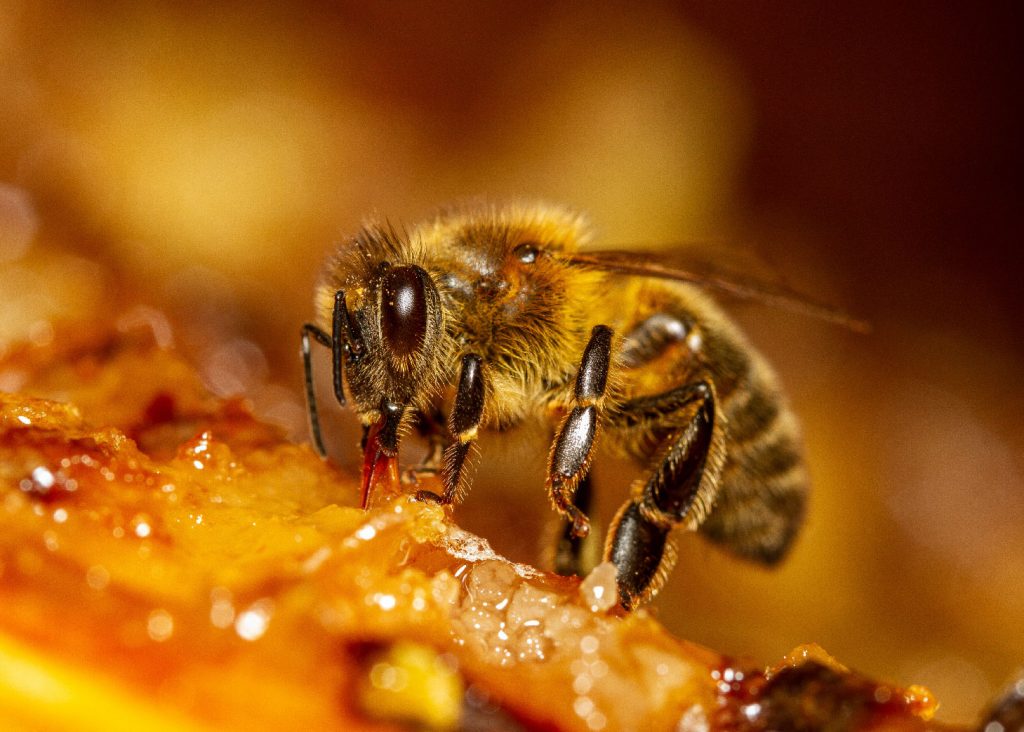
There are 8 surviving species of honeybees.
- Scientific name: Apis mellifera
- Native to Africa and Europe; found worldwide
Many different subspecies of bees collect honey. A large number of honeybees live in a group called a colony. Each colony has its own hive, a single queen surrounded by drones (male bees without stingers), and worker bees (females who help maintain the hive). It takes 12 bees a lifetime to make one teaspoon of honey. Imagine how many bees it takes to fill an entire jar!

Africanized Bees
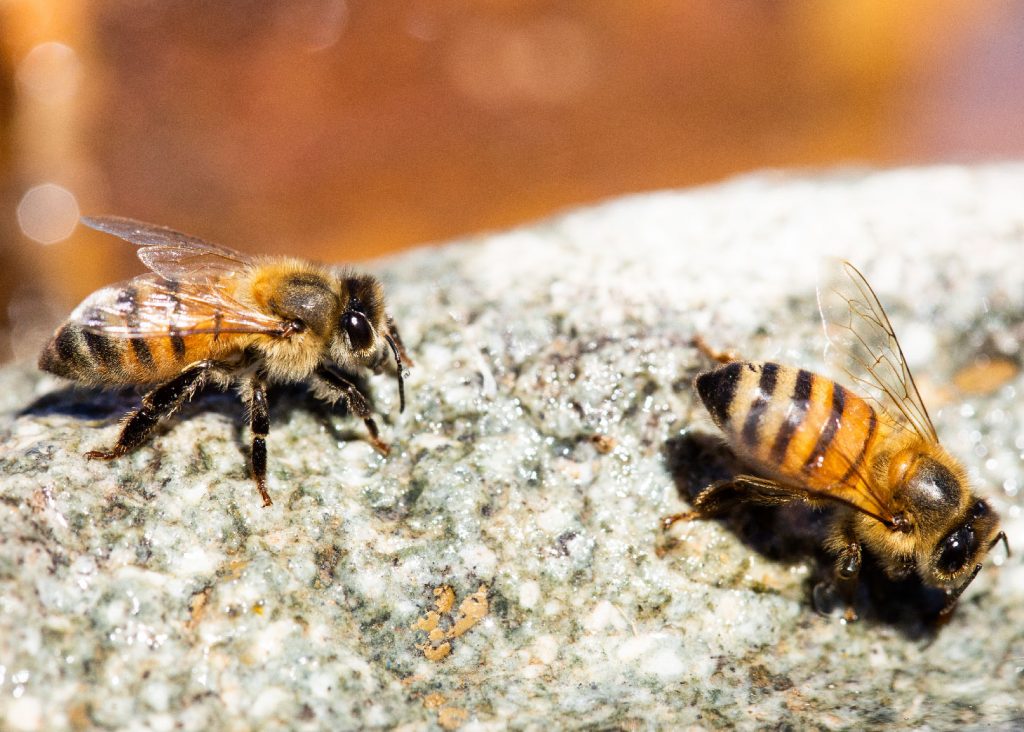
Africanized bees are a group of 10 subspecies of honey bees.
- Scientific name: Apis mellifera scutellata Lepeletier
- Native to Africa; found throughout Africa and the Americas
While Africanized bees are a type of honeybee, they have a rather poor reputation and often are referred to as “killer bees.” They are a hybrid of African bees and European bees, well known for being aggressive and sometimes stinging without provocation. They even occasionally enter European bees’ hives and kill the queen to take over the hive.

Bumblebees
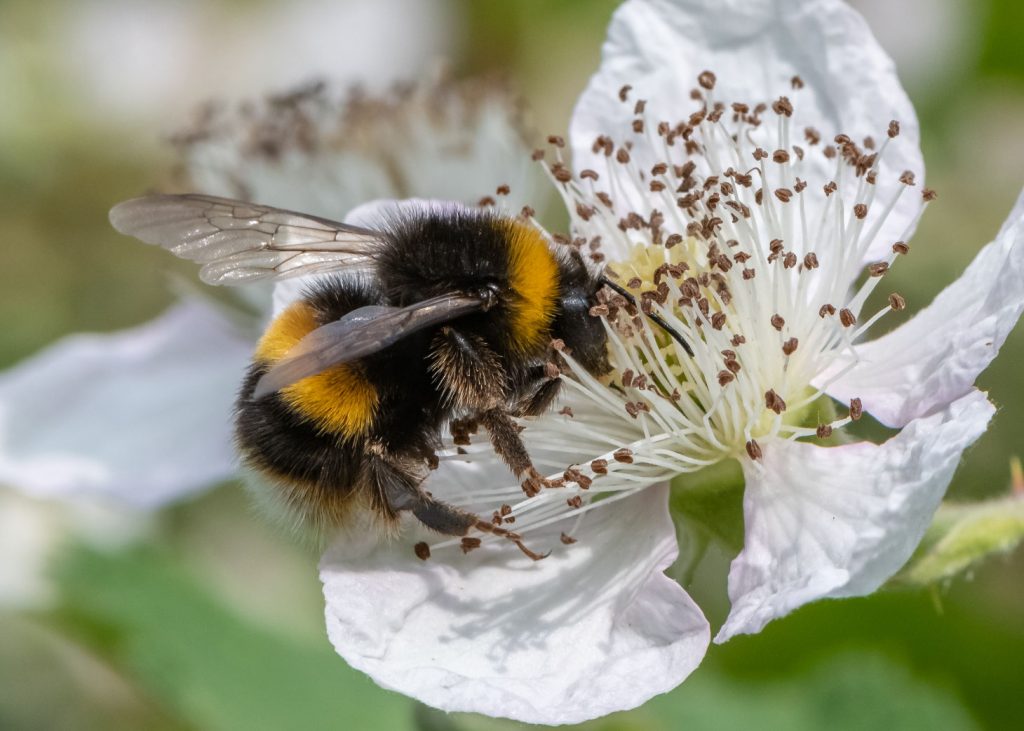
There are more than 250 species of bumblebees.
- Scientific name: Bombus dahlbomii
- Native to North America; found worldwide
These big bees might seem scary because of their size, but they are actually friendly and gentle. Leave their homes alone, and they will leave you alone. Bumblebees are wonderful pollinators but don’t make honey like honeybees do. They live in underground burrows, surviving only one season. The queen bee survives through the winter to start a new colony in the spring.

Carpenter Bees
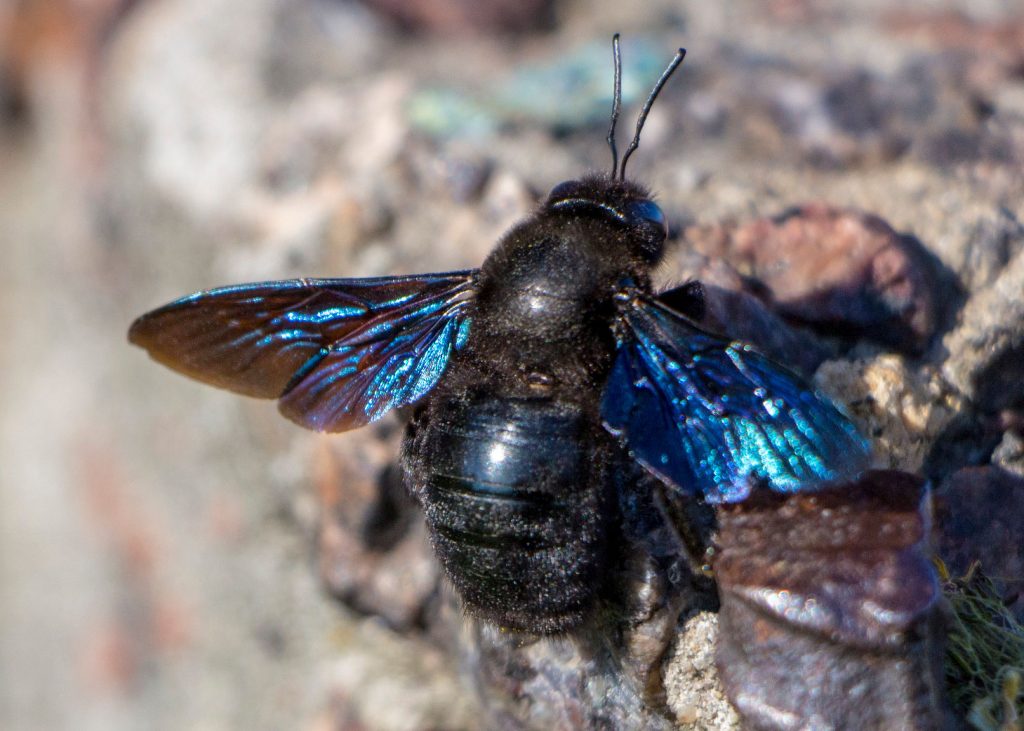
There are more than 500 species of carpenter bees.
- Scientific name: Xylocopa violacea
- Native to North America; found worldwide
Carpenter bees are usually solitary bees. They like to live alone instead of in a colony and do not have a queen. Many consider these types of bees pests, similar to termites, because they make homes in wooden structures. They chew their way inside and make small circular holes that look similar to bullet holes where females lay their eggs in the spring. Their eggs are the largest eggs of any insect!

Sweat Bees
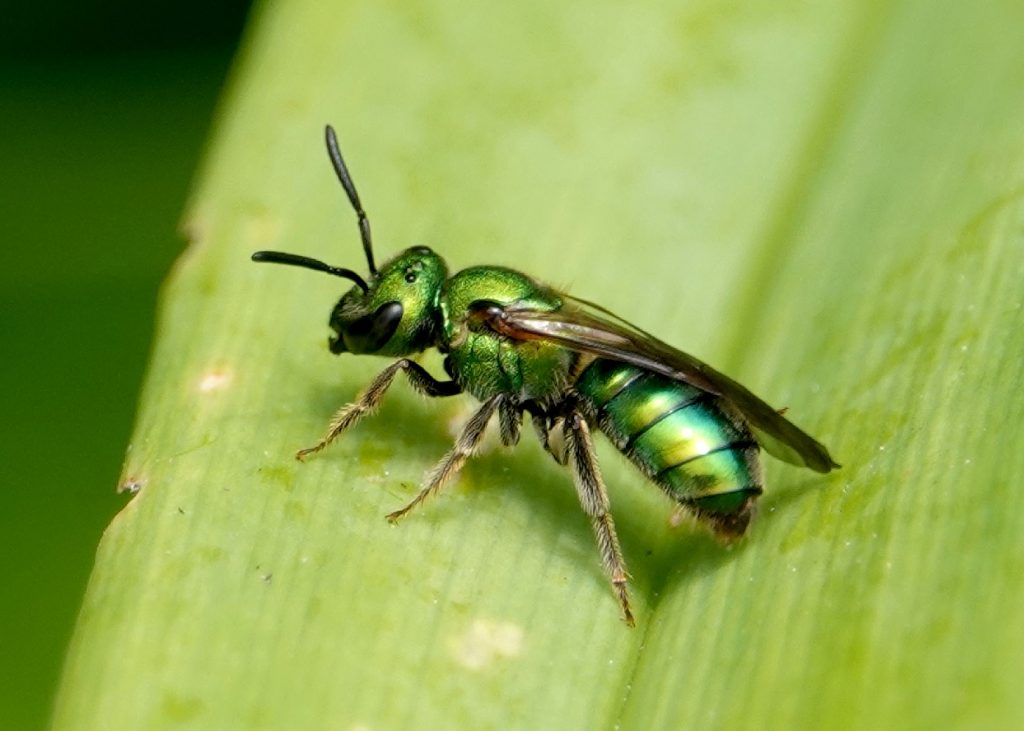
There are more than 4,500 species of sweat bees.
- Scientific name: Augochlora pura
- Native to North America; found worldwide
Sweat bees are usually smaller than other types of bees and attracted to the smell of human sweat. If you try to swat them away, the females may sting you, but the males cannot. They mate in the fall and then the males die. The females then build their own individual nests in the bare, dry dirt or in rotten logs and trees.

Leafcutter Bees
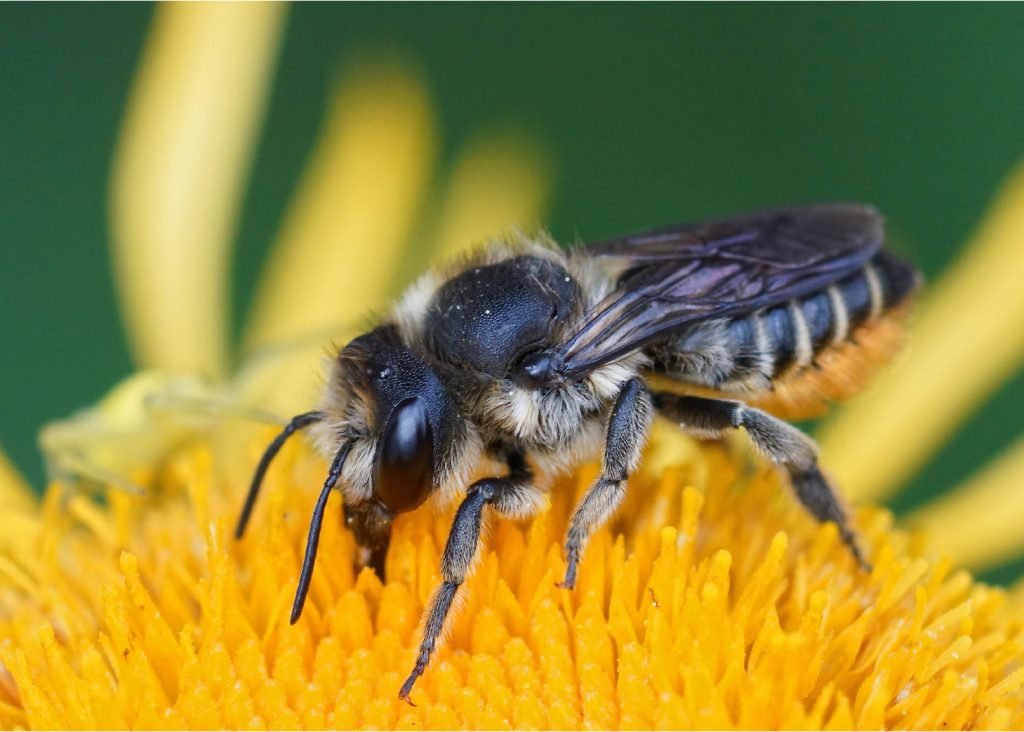
There are more than 1,000 species of leafcutter bees.
- Scientific name: Megachile leachella
- Native to North America; found worldwide
These types of bees are unique because they like to cut leaves, just like their name suggests. They cut leaves in smooth circles or crescents and use their cuttings to make nests in small cavities like the inside of a hollow stem or soft rotted wood. Some leafcutter bee species even use flower petals to make their nests in sandy coastal areas.

Mason Bees
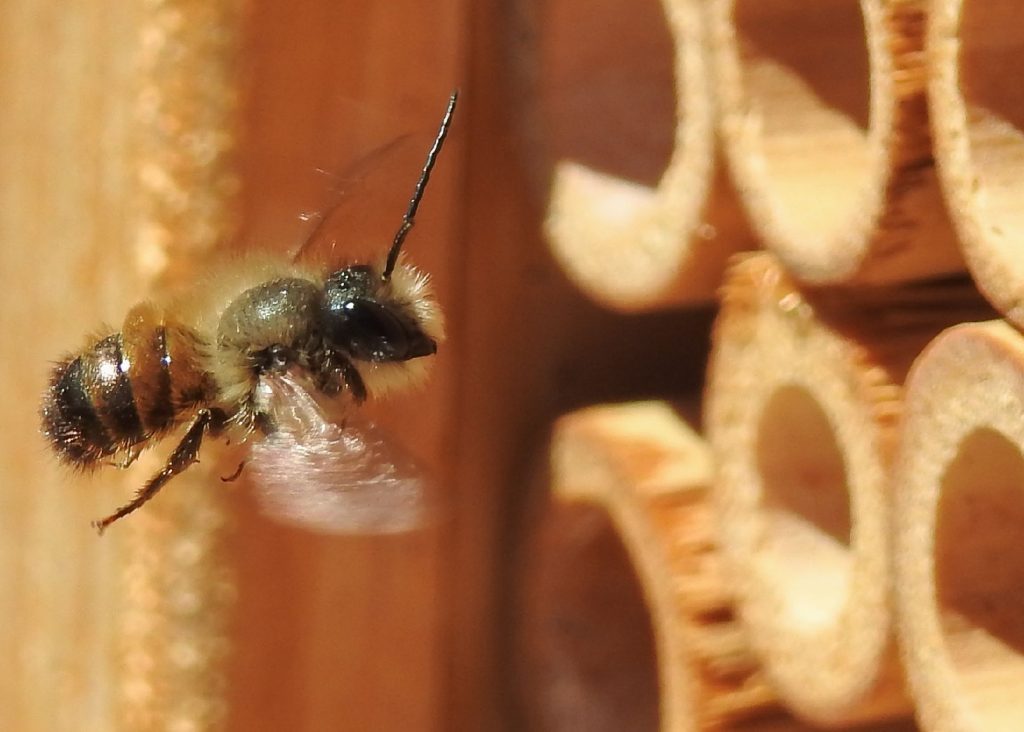
There are more than 725 species of mason bees.
- Scientific name: Osmia lignaria
- Native to North America
Mason bees are one of the friendliest types of bees and rarely sting humans. They like to live alone in existing holes or tunnels. They might look a little silly belly flopping onto flowers to collect pollen, but this makes them some of the most effective pollinators around. Because they are so good at their job, many orchards keep mason bees to help pollinate fruit trees.

Cuckoo Bees
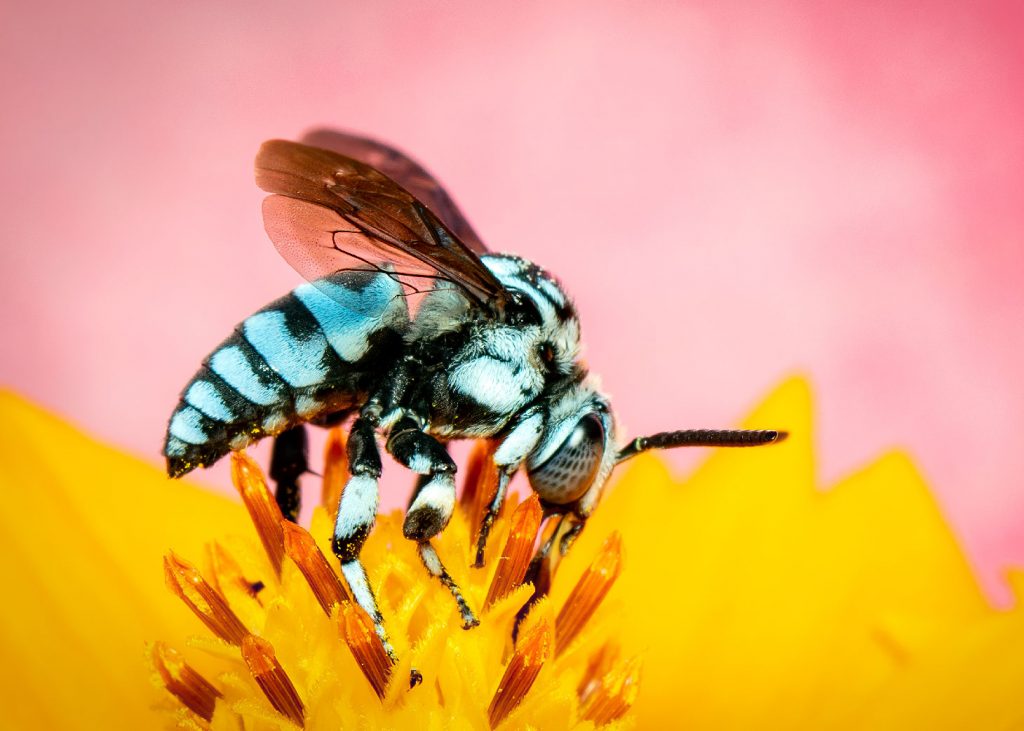
There are more than 850 species of cuckoo bees.
- Scientific name: Thyreus nitidulus
- Native to Australia; found in New Guinea and Australia
Cuckoo bees are a very deceptive type of bee. Instead of creating places for their own young, they lay their eggs in other types of bees’ burrow nests and let other species of bees care for them. Because of this, they no longer need to collect pollen for their young and are rather hairless. Cuckoo bees may pollinate a little, but not very well because of their lack of hair.
We hope you enjoyed these highlights of bees from around the world and now know how to identify them in your neighborhood or when traveling. Visit National Geographic’s page to learn much more about these unique creations from God!

Bee Craft for Kids and Printable Poster
Don’t forget to download our free illustrated bee poster and beehive dot-art template!

You may also like. . .

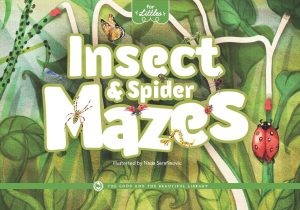

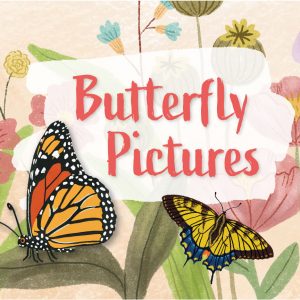



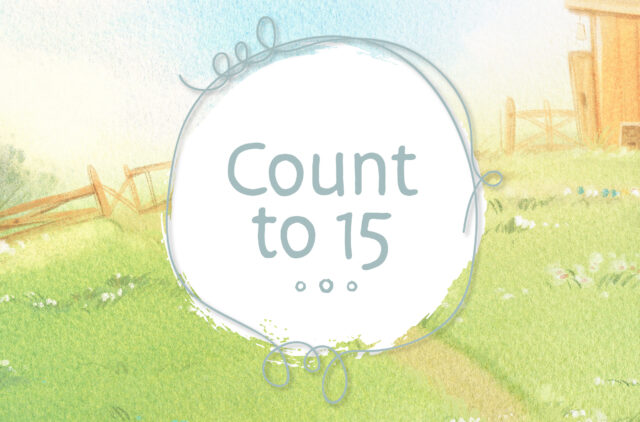

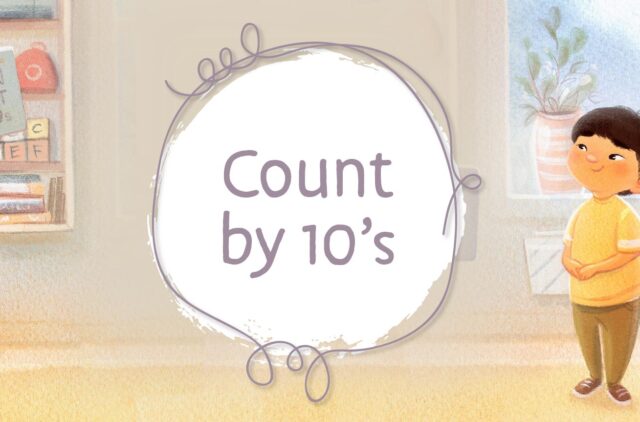



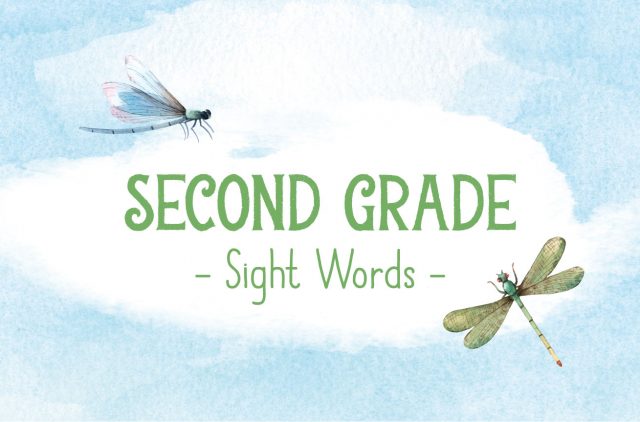
Comments
Would you consider making this article (and others like it) printable? I don’t want to be reading off this information and flipping my device around to show the pictures to my children. But if it was available in printed format, that would be awesome. It could even double as read-a-loud for older students, or an extension. Thank you so much for all the good and beautiful information and resources you provide, our family appreciates everything.
Thank you for your suggestion! We’re so glad you are enjoying the resource and appreciate the time you took to share your feedback!
I LOVE the printable poster you shared!! It is hanging on my homeschool wall-I would love a printable poster with each science unit-that would be awesome!! Everything you guys do is just good & beautiful! Thank you!!
I would love to see these Little Hands science informational areas be made into a simple, concise printable documents too! Less screen time for the littles is desirable and I’d just print them right up to go along with the activities. I have the regular Fields & Flowers Guide with the additional “The Big Book of Science Stories” but I don’t see this information here in those and would love to print these to include with my lessons, even if some of this information is in the videos.
Thank you for your wonderful suggestion, Marie! We appreciate the time you took to share and hope you continue to enjoy the Science for Little Hearts and Hands Fields & Flowers course!
My kids loved learning about bees. We have a huge sunflower patch in our yard during the spring and summer. We love watching the bees and taking pictures. We enjoyed this post . Thank you for such an amazing curriculum program.
Thank you!